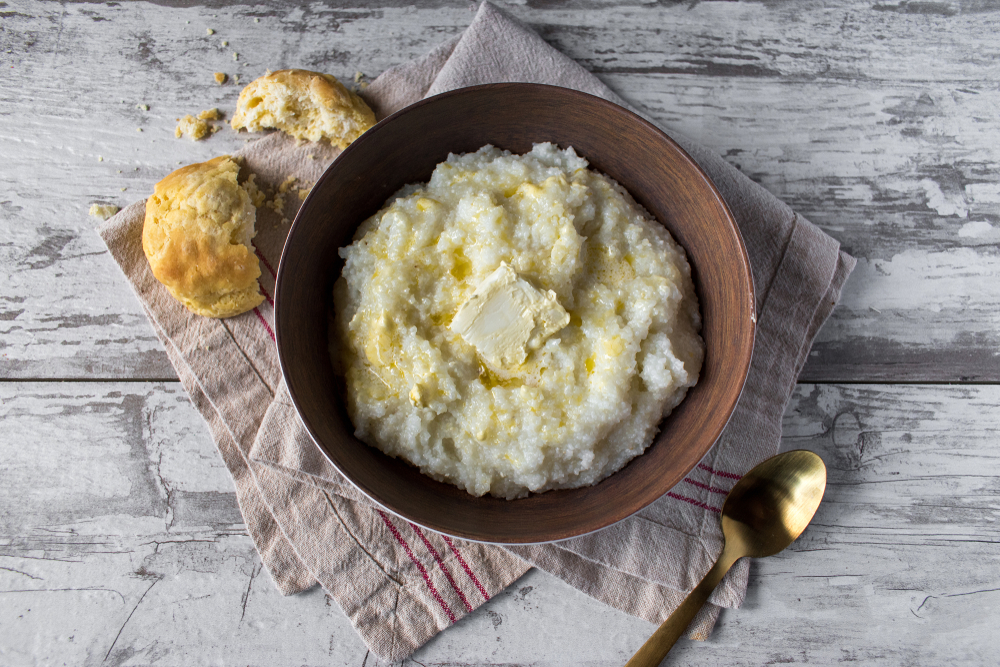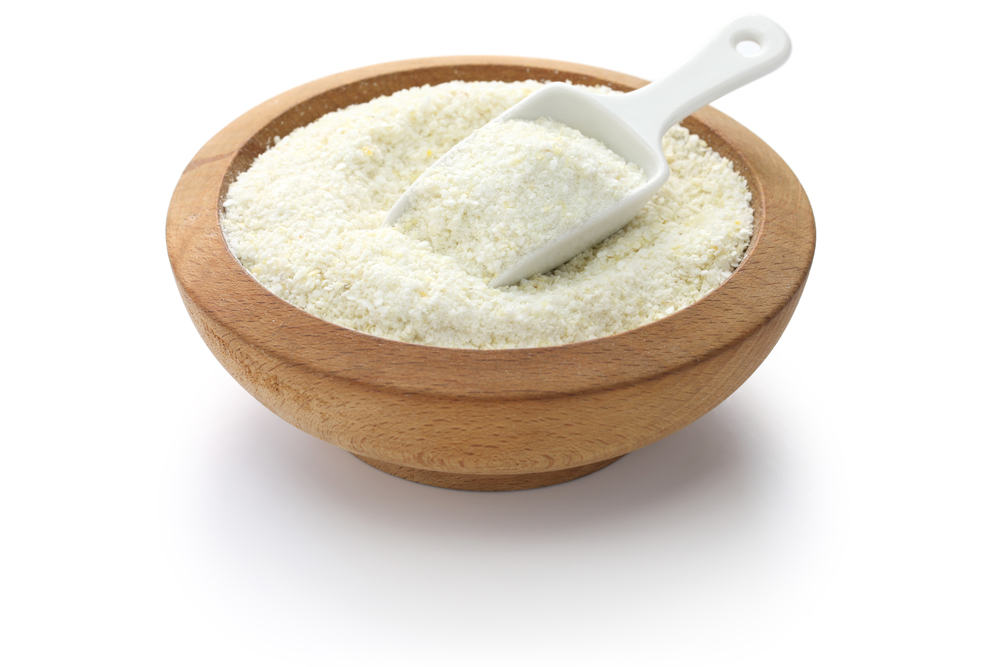When it comes to warm, comforting breakfast dishes, both cream of wheat and grits often come to mind. These popular porridge-like dishes may appear similar at first glance, but they have their own unique characteristics that set them apart.
In this article, we will explore the taste and textures of cream of wheat and grits, ultimately answering the question of whether they taste alike.
Cream of wheat, made from ground wheat kernels, boasts a smooth texture and a mild, slightly sweet flavor. On the other hand, grits, primarily made from coarsely ground corn, offer a more granular texture and a subtle corn flavor.
To better understand the differences and similarities between these two breakfast staples, we will delve into their respective preparation methods, flavor possibilities, and nutritional profiles.
Key Takeaways
- Cream of wheat and grits have distinct textures and flavors, with the former being smoother and mildly sweet, and the latter being more granular and subtly corn-flavored.
- Both dishes can be prepared in various ways, and their tastes can be enhanced with different toppings and flavors to cater to individual preferences.
- Nutritional values and health benefits differ between cream of wheat and grits, making them suitable for different dietary needs and preferences.
Understanding Porridge

Porridge is a popular breakfast dish made from grains, water or milk, and often flavored with ingredients such as sugar, salt, and butter. It’s typically served hot and provides a nutritious and energy-packed start to the day.
Cream of wheat, made from the ground endosperm of wheat, and grits, made from ground hominy or corn, are two distinct types of porridge.
Both cream of wheat and grits share some similarities in terms of texture and preparation, but they also have their differences.
The texture of porridge can vary depending on the type of grain used and the preparation method. Cream of wheat has a smooth and creamy consistency, while grits usually have a slightly coarser texture.
To cook these cereals, combine the grain with a liquid (usually water or milk) in a pan, bring to a boil, and cook until the desired consistency is reached.
When it comes to nutrition, porridge made from whole grains is a good source of fiber, iron, calcium, vitamins, and minerals.
While cream of wheat provides protein and is fortified with vitamins and minerals like iron and calcium, grits offer a small amount of protein and contain fewer vitamins and minerals in comparison.
Both cream of wheat and grits are relatively low in fat and calories, making them a healthy breakfast option. They can be customized with additional toppings, such as fruit, nuts, or sweeteners, to suit individual taste preferences.
One should be mindful of the added sugars and fats, as these can increase the calorie content of the dish.
Aside from the nutritional aspects, cooking time is another factor that can impact breakfast choices. Cream of wheat generally cooks faster than grits, taking only a few minutes to prepare, while grits may take up to 20 minutes or more.
Since both options can be prepared quickly, they remain popular among individuals who seek a quick, hearty, and healthy breakfast that’s also low in fat and rich in carbohydrates.
In summary, while cream of wheat and grits both fall under the umbrella of porridge, they have distinct characteristics in terms of ingredients, texture, nutrition, and cooking time.
Exploring Grits
Grits, a popular southern breakfast dish in the United States, are typically made from coarse-ground dent corn. Dent corn has a unique texture and flavor that sets it apart from other types of corn, contributing to the distinct taste of grits.
When cooked, grits transform into a creamy, smooth, and somewhat nutty hot cereal that can be enjoyed with various additions such as butter, salt, sugar, or milk.
To prepare grits, one typically combines the coarse corn with water or milk in a pan, bringing the mixture to a boil. Then, the heat must be reduced to low, and the mixture should be stirred until it thickens.
This process usually takes roughly 20-25 minutes. Grits can be adapted to individual preferences, whether it be sweeter breakfast varieties topped with sugar or savory versions with the addition of cheese, butter, or bacon.
Nutritionally, grits are a decent source of carbohydrates, with a serving size of about half a cup containing approximately 19 grams of carbohydrates and 3 grams of protein.
Grits are low in fat, making them a suitable component of a healthy breakfast. Additionally, they provide a modest amount of fiber, iron, and calcium, offering essential vitamins and minerals to fuel the body’s daily energy needs.
On the other hand, cream of wheat is a type of farina, a hot cereal derived from finely ground wheat rather than corn. It has a notably different texture compared to grits, with a smoother and creamier consistency. Similar to grits, cream of wheat is typically cooked in water or milk.
The cooking time is generally shorter, around 10-12 minutes, resulting in a hot breakfast cereal with a more subtle taste.
In terms of nutrition, cream of wheat contains slightly more calories compared to grits, along with a higher amount of carbohydrates – about 24 grams per serving. Protein and fat content are similar, and cream of wheat offers more iron and calcium.
However, it lacks the corn-derived vitamins and minerals found in grits, such as certain B vitamins. Both hot cereals can be customized with various toppings and flavors to satisfy personal preferences.
In conclusion, while both grits and cream of wheat are hot cereals often enjoyed for breakfast, their tastes, textures, and nutritional contents differ due to their respective ingredients.
Grits boast a coarser, nuttier taste due to ground corn, while cream of wheat offers a smoother, creamier experience derived from finely ground wheat. Each has its own unique qualities, appealing to a wide range of palates and dietary needs.
Discovering Cream of Wheat

Cream of Wheat is a popular hot breakfast cereal made from wheat semolina or ground wheat kernels. It is known for its creamy texture and smooth consistency, making it a perfect option for those looking for a warm and satisfying breakfast.
The cooking process typically involves combining cream of wheat with water or milk and cooking it over a pan until it reaches the desired consistency.
One of the main comparisons made between cream of wheat and grits is their texture. Cream of wheat has a smooth, creamy consistency, while grits are typically coarser in texture.
This is due to the difference in their ingredients; cream of wheat is made of wheat middlings, while grits are made from ground corn.
In terms of taste, cream of wheat is relatively neutral and can be easily modified to suit personal preferences. Some people enjoy it with a touch of salt, while others prefer to add sugar or other sweeteners.
It also pairs well with various toppings, such as fruit, nuts, or a dollop of butter, allowing for a customizable breakfast experience.
Nutritionally, cream of wheat is a good source of carbohydrates, which provide energy for the body. It is low in fat and contains significant amounts of essential vitamins and minerals, particularly iron, calcium, and B vitamins.
Adding milk instead of water when cooking can enhance the nutritional value by providing additional calcium, as well as contributing to a creamier texture.
Due to its wheat content, cream of wheat is not an ideal choice for those with gluten intolerances. It also contains only small amounts of fiber compared to other hot breakfast cereals.
However, its nutritional profile overall makes it a suitable option as part of a healthy breakfast.
Cooking time is another factor that distinguishes cream of wheat from grits. While grits require a longer cooking time, cream of wheat can be prepared in just a few minutes.
This feature makes it a convenient option for busy mornings when time is scarce.
In conclusion, while cream of wheat and grits share some similarities, they differ greatly in terms of taste, texture, and nutritional value.
These unique attributes make cream of wheat its own delicious and satisfying hot breakfast option, ready to be explored and enjoyed by breakfast enthusiasts.
Comparison Between Cream of Wheat and Grits
When exploring hot breakfast cereals, two popular options are cream of wheat and grits. Both are comforting and versatile choices, but they do have some differences in taste, texture, and nutritional profile.
Cream of wheat is made from ground wheat kernels, while grits are derived from ground corn. This distinction in origin creates a difference in their flavor profiles.
Cream of wheat has a mild, slightly sweet taste, which can be accentuated with the addition of sugar, milk, or other sweeteners. Grits, on the other hand, have a more savory, corn-forward flavor and are typically seasoned with salt, butter, and sometimes cheese.
The texture of these two cereals also varies. Cream of wheat is known for its smooth and creamy consistency when cooked with water or milk.
Grits have a coarser texture due to the larger grind size of the corn, giving them a slightly grainy feel. The cooking time for both cereals is about the same, taking approximately 5-10 minutes in a pan on the stovetop.
Nutritionally, cream of wheat and grits have some similarities and differences. Both cereals are rich in carbohydrates and offer a quick source of energy, making them suitable choices for breakfast.
They also contain various vitamins and minerals, such as iron and calcium.
However, there are notable differences in their nutritional content. Cream of wheat has more fiber than grits, which benefits digestive health and helps regulate blood sugar levels.
It is also generally lower in calories and fat than grits, making it a lighter option for those watching their caloric intake.
Grits, conversely, tend to have more protein and fewer carbohydrates per serving than cream of wheat. This makes them a slightly more filling option, especially when paired with proteins like eggs or bacon.
The fat content in grits can vary depending on how they are prepared, as the addition of butter or cheese increases fat levels.
In terms of health benefits, both cereals have their advantages. Cream of wheat’s higher fiber and iron content plays a positive role in maintaining digestive health and combating anemia, while grits can offer a more substantial, protein-rich meal that provides sustained energy throughout the day.
Ultimately, the choice between cream of wheat and grits comes down to personal preference in flavor and texture. Both cereals can be adapted to suit individual tastes, dietary needs, and cooking styles, making them popular and versatile options for a warm, comforting breakfast.
Detailed Preparation Methods

Preparing both grits and cream of wheat involves similar steps, but there are slight differences that set the two apart.
Grits: To cook grits, start by bringing water to a rolling boil in a saucepan or pot. For a creamier texture, replace some of the water with milk. A common ratio is 4:1, with four parts liquid to one part grits. As the water heats, add salt to taste.
Gradually pour the grits into the boiling water, stirring continuously to prevent lumps from forming. Among various grits, stone-ground varieties require longer cooking times as they are coarser.
Once the grits reach the desired consistency, typically taking about 20-25 minutes of constant cooking and stirring, it’s time to add butter or any other seasoning before serving the dish hot.
Cream of Wheat: Cream of wheat’s cooking method is similar to grits but has a few key differences. In a saucepan, bring the required amount of water or milk to a boil.
While some recipes call for a 2:1 liquid-to-cream-of-wheat ratio, others prefer a 3:1 ratio for a thinner consistency. Salt can be added to taste at this stage.
Once the liquid is boiling, gradually whisk in the cream of wheat to ensure a smooth consistency. Lower the heat and continue to cook for about 2-3 minutes, stirring constantly.
For those using a microwave, follow the instructions on the package for cooking time and energy settings. After cooking, add butter and any additional seasonings to taste, and serve the dish hot.
While both grits and cream of wheat share similarities in their preparation methods, these differences highlight the distinct tastes and textures of each porridge.
Experimenting with the ratio of liquid, cooking time, and added ingredients can create variations in the final dishes’ taste and texture.
Varieties of Toppings and Flavors
Grits and Cream of Wheat are distinctive dishes known for their delightful textures. Grits have a rougher, grittier texture, while Cream of Wheat features a smooth, creamy consistency.
However, the true magic of these breakfast staples lies in the extensive variety of toppings and flavors that can be added to enhance and modify their palatability.
Sweet options are particularly popular for both grits and Cream of Wheat. Sugar, honey, and maple syrup are common sweeteners that can be drizzled on top or mixed into the dishes.
These sweeteners can be complemented further by adding fruit. Berries, such as strawberries, blueberries, and raspberries, contribute bright flavor and eye-catching color.
Other fruits, like bananas or peaches, pair well with a dash of cinnamon or a sprinkle of nutmeg, creating a warming taste sensation.
For a richer and more indulgent version, some prefer to incorporate elements like molasses, brown sugar, or chocolate chips.
Nuts like almonds, walnuts, or pecans can also be added, offering a pleasant crunch that contrasts against the smooth or gritty textures of Cream of Wheat or grits.
Savory toppings and flavors open up an entirely new dimension for customizing these breakfast bowls. Cheese, for example, is often mixed into grits to generate a creamier and richer mouthfeel.
Vegetables like sautéed onions, peppers, or mushrooms enhance the dish with an earthy and hearty touch.
Furthermore, adding protein options such as bacon, sausage, or shrimp can transform grits, in particular, into a satisfying meal that goes beyond the breakfast table.
Meanwhile, Cream of Wheat can also be adjusted to taste with the introduction of savory ingredients. A dollop of butter or a splash of cream can create a more indulgent profile.
In conclusion, the world of grits and Cream of Wheat is elevated by the endless possibilities one can experiment with when it comes to toppings and flavors.
Mixing and matching sweet or savory components ensures a unique and delicious experience each time these dishes are prepared.
Nutritional Information and Health Benefits

Cream of wheat and grits are two popular types of porridge commonly consumed for breakfast. They both offer a hearty meal to start the day and have some nutritional benefits. However, their taste and texture might be different, making them distinct breakfast choices.
In terms of nutritional composition, cream of wheat is made from finely ground wheat and is high in carbohydrates. A serving size of 33 grams contains about 130 calories, 27 grams of carbohydrates, 1 gram of fat, 4 grams of protein, and no fiber.
Cream of wheat is fortified with vitamins and minerals, including iron, calcium, thiamin, riboflavin, and niacin, providing a good source of essential nutrients for a healthy breakfast.
Grits, on the other hand, are made from ground corn and have a slightly different nutritional profile. A 28-gram serving of grits provides approximately 110 calories, 23 grams of carbohydrates, 1 gram of fat, and 2 grams of protein.
Unlike cream of wheat, grits contain small amounts of fiber, around 2 grams per serving. They also provide some essential vitamins and minerals, such as calcium, iron, and vitamin B6.
Although both cream of wheat and grits are considered healthy breakfast options, they may not satisfy the daily requirements for certain nutrients like fiber and protein.
Nevertheless, they are generally low in fat and can be part of a well-balanced diet, especially when paired with other nutritious ingredients.
One main advantage of these types of porridge is their versatility. Both cream of wheat and grits can be prepared in various ways, helping to cater to different tastes and preferences.
This adaptability allows for the inclusion of additional ingredients, such as fruits, nuts, and dairy products, which can further enhance their nutritional value and health benefits.
In conclusion, cream of wheat and grits can both contribute to a nutritious and satisfying breakfast. They are low in fat, high in carbohydrates, and contain varying amounts of essential vitamins and minerals.
While the taste and texture of these porridges differ, they can be customized to suit individual preferences and dietary needs.
Historical and Cultural Context
Porridge has been a staple dish in various cultures throughout history. Grits and cream of wheat both belong to the porridge family, with each having unique origins and characteristics.
Grits, native to the American South, have a history deeply rooted in indigenous and African-American culinary traditions. They are made from ground corn, specifically hominy, which is corn that has been treated with an alkali solution.
This process, called nixtamalization, enhances the nutritional value of corn and was discovered by the indigenous peoples of the Americas.
On the other hand, cream of wheat has its origins in the Northern United States. It was first produced in 1893 by wheat mill owners in Grand Forks, North Dakota.
Cream of wheat is made from the ground endosperm of hard wheat kernels, which results in a smoother and creamier texture as compared to grits. It quickly became popular, and soon its production expanded throughout the country.
While both grits and cream of wheat are porridge-based dishes, there are some distinct differences between them. Grits are gluten-free, as they are made from corn, making them a suitable breakfast choice for individuals with gluten intolerance or celiac disease.
Cream of wheat, being made from wheat, contains gluten and may not be suitable for those with gluten-related sensitivities.
Both grits and cream of wheat are often considered healthy breakfast options, as they are low in fat, high in carbohydrates, and can be fortified with essential nutrients. They also serve as an energy source, providing fuel for the day. When prepared with milk, they provide extra protein, vitamins, and calcium.
In summary, grits and cream of wheat have their respective historical and cultural contexts. While both are porridge-based dishes, grits have indigenous American roots and are gluten-free, whereas cream of wheat originated in the Northern United States and contains gluten.
Both are popular, healthy breakfast options that can be found on dining tables across America.
Frequently Asked Questions
What is the main flavor difference between Cream of Wheat and grits?
Cream of Wheat is made from ground wheat and has a mild, slightly nutty flavor. Grits, on the other hand, are made from ground corn and have a more pronounced, slightly sweet corn taste. While both grains are versatile and can be seasoned in various ways, their primary flavors are distinct from each other.
How do the textures of Cream of Wheat and grits compare?
Cream of Wheat has a smooth, creamy texture when cooked, which is due to the finer grain of the wheat. Grits, in contrast, have a slightly coarser texture and feel grainier in the mouth.
The coarser texture of grits is due to the larger ground corn particles. This difference in texture can affect personal preference and is often taken into consideration when deciding which dish to prepare.
What are some popular Cream of Wheat and grits recipes?
Common Cream of Wheat recipes include serving it with milk, sweeteners, and fruits, such as bananas or berries, for a quick, satisfying breakfast.
Grits can be enjoyed in a variety of ways, including the classic Southern dish of shrimp and grits, or served with cheese, butter, and bacon for a savory breakfast.
Can Cream of Wheat be a substitute for grits in recipes?
While they both have a porridge-like consistency, Cream of Wheat and grits have different flavors and textures.
It is possible to substitute one for the other in certain recipes, but it may result in noticeable alterations to taste and texture. To maintain the intended flavor of a dish, it is generally best to use the specific grain called for in the recipe.
How does Cream of Wheat differ from other grains like oatmeal and polenta?
Cream of Wheat is made from ground wheat, which gives it a distinctive taste and texture compared to other grains. Oatmeal is made from rolled or steel-cut oats and has a chewier, slightly thicker consistency, while polenta is made from ground corn, similar to grits, but has a finer texture and milder flavor.
What is the nutritional difference between Cream of Wheat and grits?
Cream of Wheat is a good source of iron and B vitamins, while grits provide a moderate amount of iron, but fewer B vitamins. Both grains are relatively low in calories and fat and can be part of a nutritious diet.
However, Cream of Wheat has a slightly higher protein content, and grits have a bit more fiber. Nutritionally, they are both beneficial, and the choice between them can be based on personal preference, taste, and texture.







